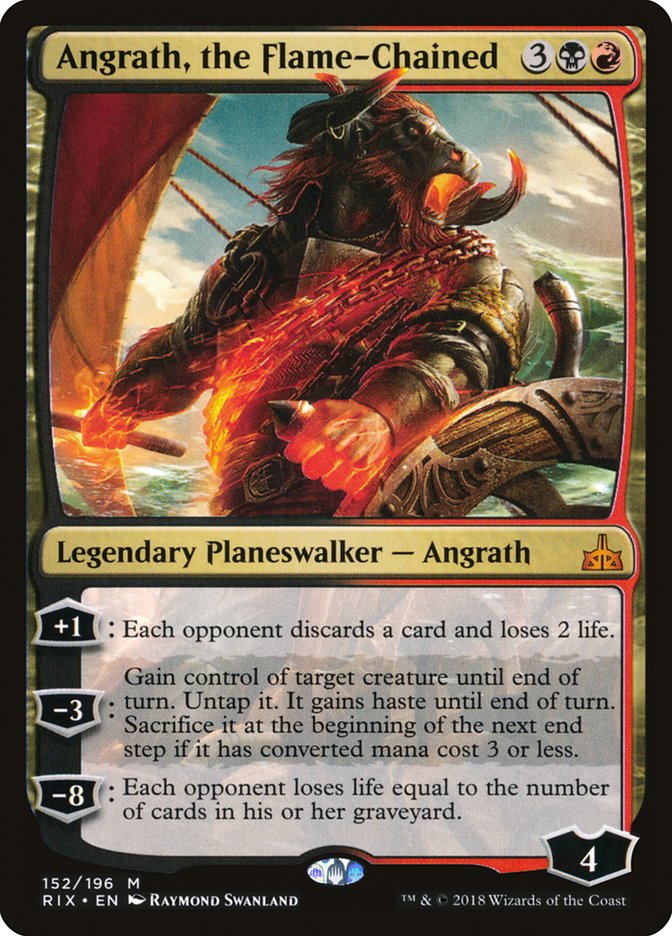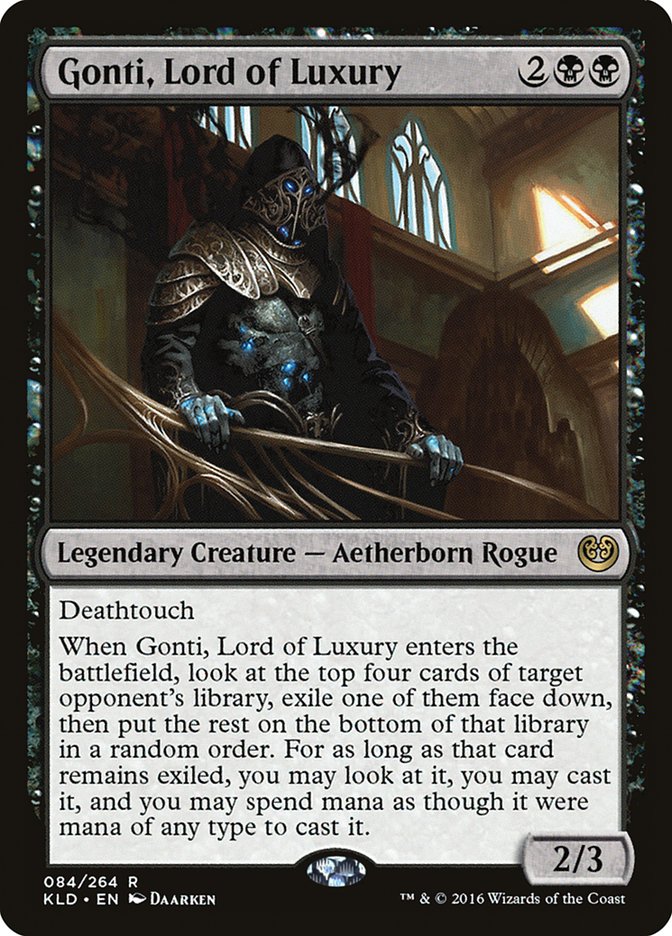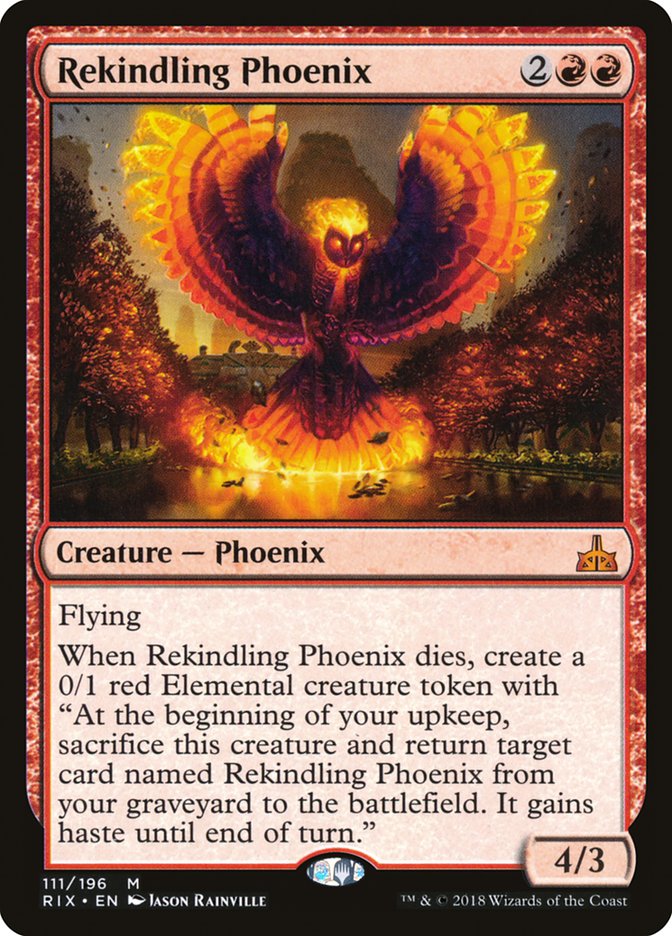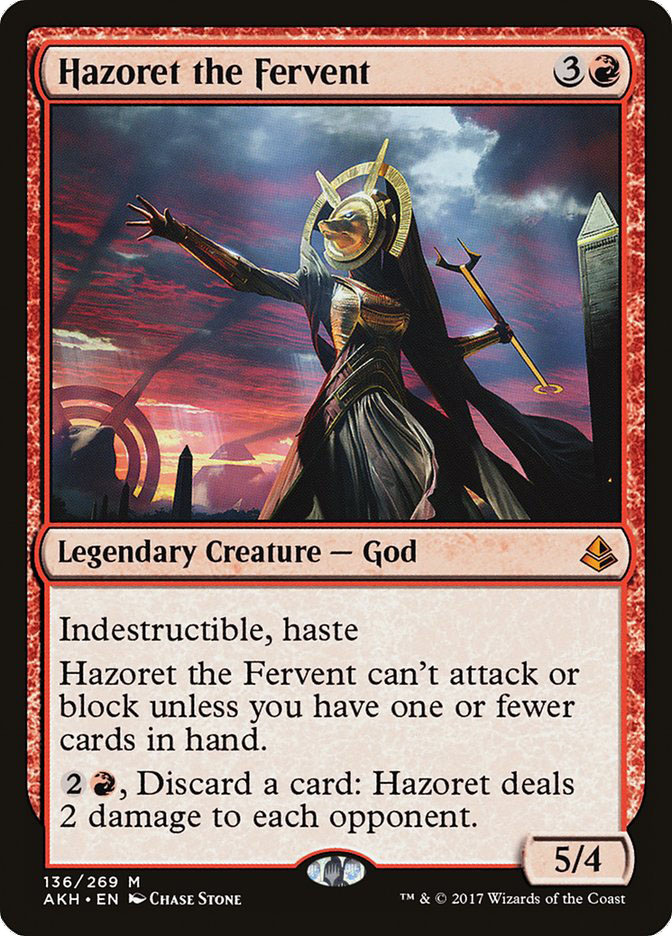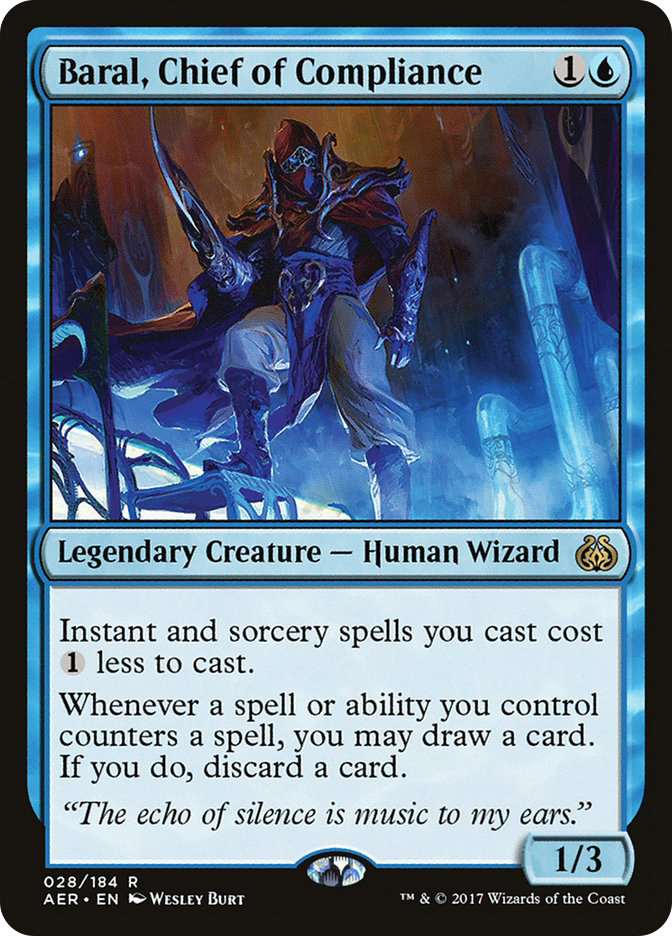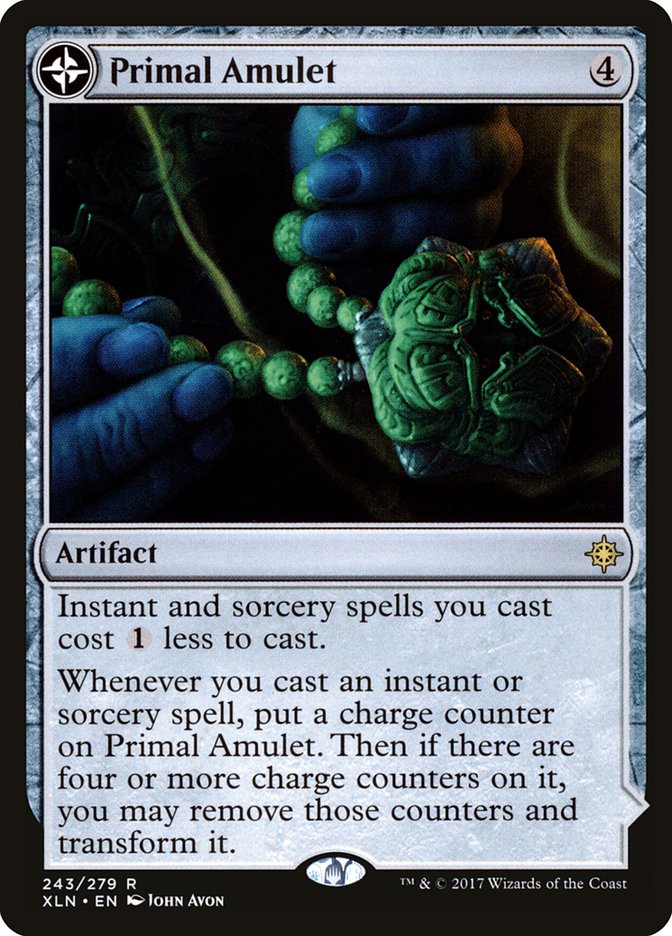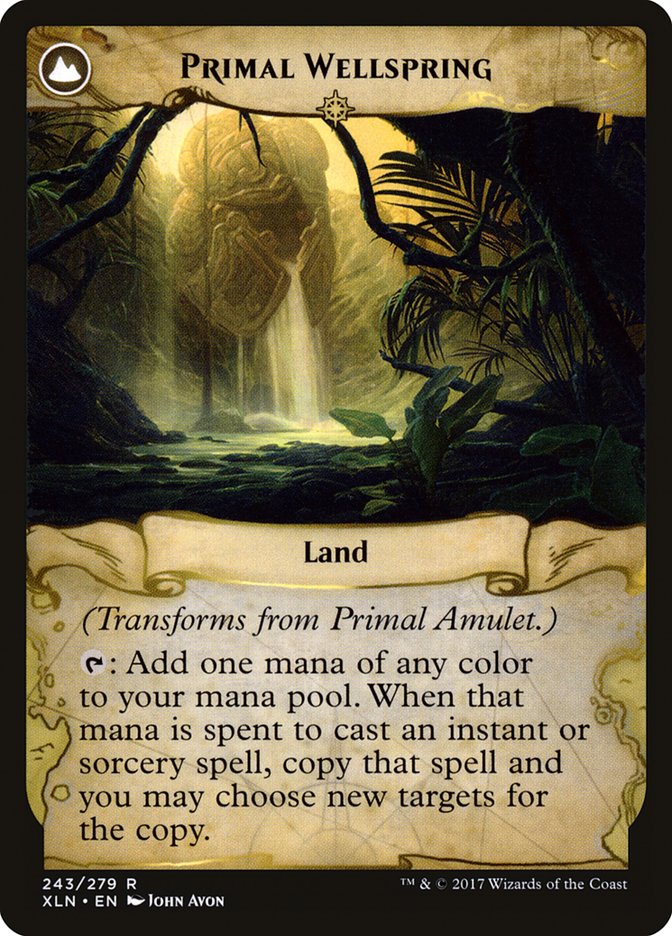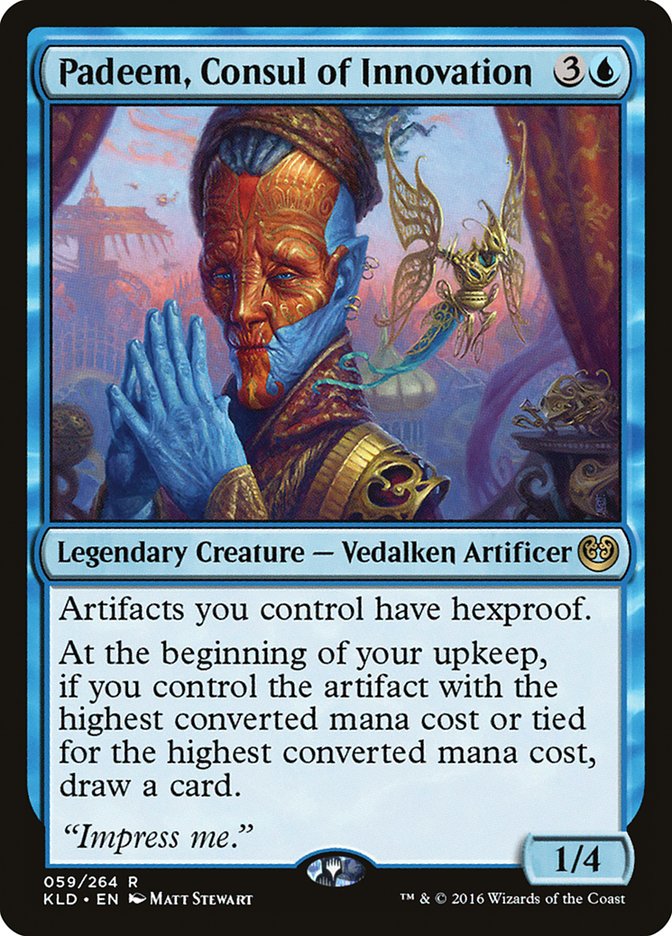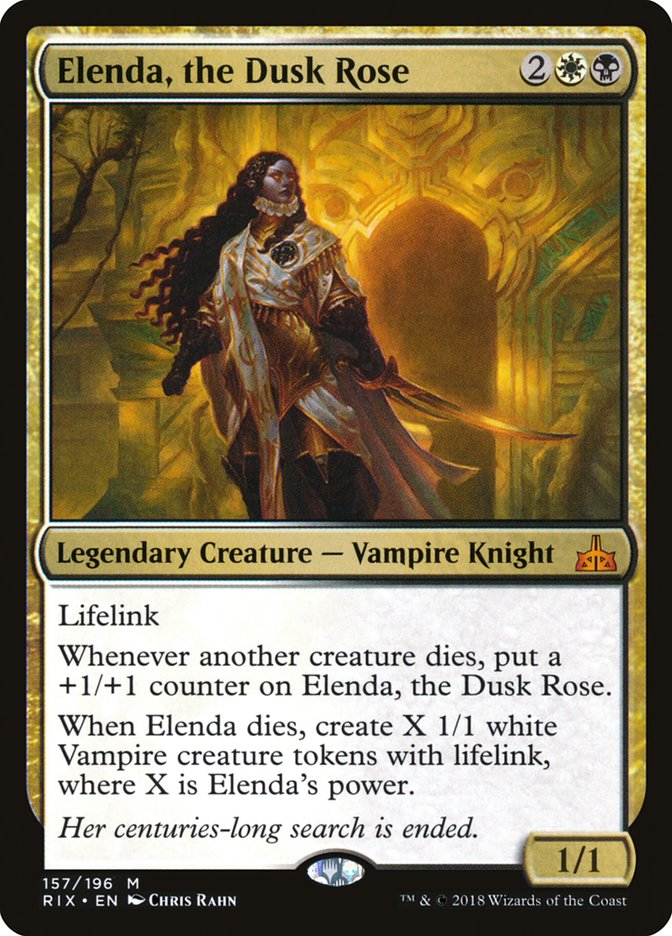Given how simple the format is, it’s kind of ridiculous how excited I am
about Brawl. This probably surprises you. I may not be the expected target
audience for “Commander for new players.” I have a pretty extensive
collection and could fairly easily build the Commander deck of my choice,
but I haven’t played the format for several years. I genuinely love casual
Magic – through college I basically gave up on playing competitively
because my school was pretty remote but played casual games with 250 card
singleton decks all the time, and I currently maintain a Cube of my own
design. Commander lost me with the Commander products. They have a place,
and they let a lot of people who couldn’t otherwise engage with the format,
but they basically just don’t feel like Magic to me.
Anyway, Brawl has a lot of advantages – the fact that it doesn’t use
Commander products is just the beginning. Getting away from a large
quantity of artifacts you almost have to play to feel like you’re even
trying (basically any good artifact that generates mana, because the basic
Commander rules guarantee a mana sink, and a lot of the early mana
artifacts were simply undercosted) is probably an even bigger improvement.
It’s also great from a collection management standpoint – yes, I could go
through my whole collection and find all the stuff I’d want to build a
Commander deck, but it’s much easier to just flip through my Standard cards
when I want to build a new deck, and they’re cheap enough that it feels
pretty easy for me to maintain several different Brawl decks so that I can
lend them to friends who haven’t made decks themselves.
Besides, there are always a bunch of sweet cards in Standard that I love
playing in Limited but that aren’t quite powerful enough for any
Constructed format, including Commander, but Brawl gives me a chance to
play around with that stuff more.
The obvious concern is, “But the format is so small! Are there really
enough cards to build a lot of decks that feel different?” I’m pretty sure
the answer is yes, but let’s investigate.
Let me walk you through my process exploring this format.
I’m me, so obviously I wanted to start with a deck I could build almost
entirely by searching for the keyword “Sacrifice.”
Creatures (14)
- 1 Pia Nalaar
- 1 Weaponcraft Enthusiast
- 1 Marionette Master
- 1 Yahenni, Undying Partisan
- 1 Defiant Salvager
- 1 Dread Wanderer
- 1 Razaketh, the Foulblooded
- 1 Captain Lannery Storm
- 1 Deadeye Tracker
- 1 Captivating Crew
- 1 Ruthless Knave
- 1 Dire Fleet Hoarder
- 1 Rekindling Phoenix
- 1 Pitiless Plunderer
Planeswalkers (3)
Lands (24)
Spells (19)
- 1 Unlicensed Disintegration
- 1 Fatal Push
- 1 Sweltering Suns
- 1 Abrade
- 1 Hour of Devastation
- 1 Vraska's Contempt
- 1 Revel in Riches
- 1 Treasure Map
- 1 Thaumatic Compass
- 1 Arguel's Blood Fast
- 1 Trove of Temptation
- 1 Makeshift Munitions
- 1 Contract Killing
- 1 Heartless Pillage
- 1 Brass's Bounty
- 1 Pirate's Pillage
- 1 Azor's Gateway
- 1 Mastermind's Acquisition
- 1 Orazca Relic

Using Angrath, the Flame-Chained as your commander means you’ll
consistently have access to the ability to “borrow” your opponent’s
creatures, which means that if you have a way to sacrifice them, you’ll
always be able to use Angrath as a removal spell, even for large creatures.
Angrath is a Pirate, so using Treasure felt like a flavor win, and as it
happens, there’s a lot of mechanical overlap between Treasure and
sacrificing things – Makeshift Munitions can sacrifice Treasure, Fire Fleet
Hoarder and Pitiless Plunderer generate Treasure when they’re sacrificed,
Ruthless Knave sacrifices things to generate Treasure…
As it happens, Treasure actually forms a pretty solid, multiplayer-friendly
game plan – build up a collection of Treasure, then use it either to cast
powerful spells, or eventually win with Revel in Riches or Marionette
Master. The fact that every Treasure card pops up in a search for
“sacrifice” is just a convenient bonus.
Okay, so, proof of concept: Yes, a deck that can be built around a
mechanical and/or flavor theme, and while I did play some generically good
removal spells, I didn’t feel a ton of pressure to put every generically
good red and black card in my deck to get to enough playable cards. This
deck doesn’t even feature Gonti, Lord of Luxury, my favorite casual card of
all time! (Okay, realistically, I might add it just because it’s fun to
cast, but the point is that it totally isn’t necessary.) Rekindling Phoenix
is present because it’s on-brand, but you’ll notice Glorybringer’s absence.
The biggest problem I’ve identified with the format from building this deck
is actually the mana. There aren’t enough differently named dual lands, so
the mana in multicolor decks is just really bad. There were several
colorless lands I really wanted to play, but I’m really at the bare minimum
in terms of sources of each color for me to feel comfortable, and that’s
even accounting for all the Treasure in my deck, and I still had to make
some concessions like cutting Wily Goblin because it just seemed too hard
to cast. It’s workable, but I wish the mana were a little better, since not
being able to cast spells is a really frustrating way to lose a casual
game.
Given the mana issues in the format, there’s substantial pressure to choose
a single colored legend as your…commander? What are we calling these
things? Whatever. Anyway, if you do that, is the pool still deep enough
with only one color to work with?
It’s not my style, but just to see how it would look, I threw together a
straight forward Mono-Red Aggro deck based on the premise that if you
always have exactly one Hazoret the Fervent on turn 4, you can probably
beat some people up:
Creatures (24)
- 1 Speedway Fanatic
- 1 Pia Nalaar
- 1 Bomat Courier
- 1 Brazen Scourge
- 1 Hope of Ghirapur
- 1 Aether Chaser
- 1 Kari Zev, Skyship Raider
- 1 Glorybringer
- 1 Hazoret the Fervent
- 1 Ahn-Crop Crasher
- 1 Soul-Scar Mage
- 1 Harsh Mentor
- 1 Bloodlust Inciter
- 1 Earthshaker Khenra
- 1 Burning-Fist Minotaur
- 1 Captain Lannery Storm
- 1 Wily Goblin
- 1 Charging Monstrosaur
- 1 Rigging Runner
- 1 Rekindling Phoenix
- 1 Tilonalli's Summoner
- 1 Fanatical Firebrand
- 1 Dire Fleet Daredevil
- 1 Goblin Trailblazer
Planeswalkers (1)
Lands (25)
Spells (10)

This deck is unusually mana heavy because the land heavy draws always play
well with Hazoret – without any card draw, you really want to hit your
first five lands, so I’m playing 25 lands in a 59-card deck. There aren’t
quite enough respectable one-drops, so I have to scrape the barrel a bit
for two-drops to make up for it, but there are enough cards in the format
to build a low curve, dedicated aggressive mono-color deck, which is
actually a fairly high bar to clear.
I’m sure there are other ways to build mono-red decks around different
commanders, but red isn’t as interesting to explore for me as other colors;
think about how mono-red decks in every Cube always do the exact same
thing. Let’s move to something a little more interesting: blue decks.
First, (almost) creatureless Baral, looking to take full advantage of
Baral’s text:
Creatures (2)
Lands (24)
Spells (34)
- 1 Strategic Planning
- 1 Opt
- 1 Cancel
- 1 Negate
- 1 Essence Scatter
- 1 Metallurgic Summonings
- 1 Dynavolt Tower
- 1 Insidious Will
- 1 Confiscation Coup
- 1 Glimmer of Genius
- 1 Era of Innovation
- 1 Disallow
- 1 Reverse Engineer
- 1 Metallic Rebuke
- 1 Leave in the Dust
- 1 Pull from Tomorrow
- 1 Censor
- 1 Hieroglyphic Illumination
- 1 Galestrike
- 1 Supreme Will
- 1 Entrancing Melody
- 1 River's Rebuke
- 1 Treasure Map
- 1 Search for Azcanta
- 1 Primal Amulet
- 1 Thaumatic Compass
- 1 Overflowing Insight
- 1 Chart a Course
- 1 Spell Swindle
- 1 Secrets of the Golden City
- 1 The Immortal Sun
- 1 Admiral's Order
- 1 Azor's Gateway
- 1 Orazca Relic

Oddly, this deck wasn’t inspired by Baral’s success in one versus one
Commander, but rather by looking through transform cards and realizing how
sweet it would be to use Primal Amulet.
Like Hazoret, this deck looks not particularly well suited to multiplayer
and potentially fairly annoying to play against one on one, but again,
proof of concept that there are enough cards for a narrow plan; I was even
able to cut several counterspells.
Now what I want to look at is how different two decks in the same color can
be. Let’s compare Baral to Padeem:
Creatures (9)
- 1 Torrential Gearhulk
- 1 Glint-Nest Crane
- 1 Padeem, Consul of Innovation
- 1 Metalwork Colossus
- 1 Scrap Trawler
- 1 Trophy Mage
- 1 Merchant's Dockhand
- 1 Treasure Keeper
- 1 Walking Ballista
Lands (22)
Spells (29)
- 1 Prophetic Prism
- 1 Saheeli's Artistry
- 1 Skysovereign, Consul Flagship
- 1 Paradoxical Outcome
- 1 Aetherflux Reservoir
- 1 Cultivator's Caravan
- 1 Whir of Invention
- 1 Pacification Array
- 1 Mechanized Production
- 1 Reverse Engineer
- 1 Inspiring Statuary
- 1 Efficient Construction
- 1 Universal Solvent
- 1 Aethersphere Harvester
- 1 Pull from Tomorrow
- 1 Pyramid of the Pantheon
- 1 Commit
- 1 Edifice of Authority
- 1 Sunset Pyramid
- 1 Sorcerous Spyglass
- 1 River's Rebuke
- 1 Treasure Map
- 1 Thaumatic Compass
- 1 Spell Swindle
- 1 Secrets of the Golden City
- 1 The Immortal Sun
- 1 Kumena's Awakening
- 1 Azor's Gateway
- 1 Orazca Relic

Just eyeballing it, I think there are around ten spells in common, and most
of them are artifacts that I want to play in almost any Brawl deck. While
the Baral deck is almost all spells, this deck is almost all permanents,
and would certainly play very differently, but let me take this a set
further and look at how much room there is to build a deck differently even
when both decks are built around the same legend:
Creatures (15)
- 1 Multiform Wonder
- 1 Torrential Gearhulk
- 1 Thriving Turtle
- 1 Electrostatic Pummeler
- 1 Glint-Nest Crane
- 1 Padeem, Consul of Innovation
- 1 Aethersquall Ancient
- 1 Aether Theorist
- 1 Minister of Inquiries
- 1 Trophy Mage
- 1 Merchant's Dockhand
- 1 Aethertide Whale
- 1 Walking Ballista
- 1 Aether Swooper
- 1 Shielded Aether Thief
Lands (23)
Spells (22)
- 1 Prophetic Prism
- 1 Saheeli's Artistry
- 1 Skysovereign, Consul Flagship
- 1 Panharmonicon
- 1 Animation Module
- 1 Decoction Module
- 1 Fabrication Module
- 1 Dynavolt Tower
- 1 Confiscation Coup
- 1 Deadlock Trap
- 1 Glimmer of Genius
- 1 Era of Innovation
- 1 Whir of Invention
- 1 Gonti's Aether Heart
- 1 Inspiring Statuary
- 1 Aethersphere Harvester
- 1 Illusionist's Stratagem
- 1 Pyramid of the Pantheon
- 1 Gate to the Afterlife
- 1 God-Pharaoh's Gift
- 1 Treasure Map
- 1 The Immortal Sun

Where the first Padeem deck was built generically as an artifact deck that
took advantage of some “artifacts matter” cards, this is a dedicated energy
deck that tries to assemble the Modules or otherwise find ways to do crazy
things with energy. Ultimately, I think it’s pretty exciting that there’s
that much space in how to build a deck around a fairly focused mono-colored
legend.
Okay, so to me, it seems clear that there’s room to work with, so I think
the format should be pretty fun, so now let’s just look at some other
things we can do:
Creatures (14)
- 1 Filigree Familiar
- 1 Demon of Dark Schemes
- 1 Glint-Sleeve Siphoner
- 1 Yahenni, Undying Partisan
- 1 Gifted Aetherborn
- 1 Walking Ballista
- 1 Deadeye Tracker
- 1 Seekers' Squire
- 1 Tetzimoc, Primal Death
- 1 Ravenous Chupacabra
- 1 Dusk Legion Zealot
- 1 Twilight Prophet
- 1 Champion of Dusk
- 1 Golden Guardian
Planeswalkers (1)
Lands (24)
Spells (20)
- 1 Panharmonicon
- 1 Metalspinner's Puzzleknot
- 1 Cultivator's Caravan
- 1 Fatal Push
- 1 Aethersphere Harvester
- 1 Resourceful Return
- 1 Never
- 1 Edifice of Authority
- 1 Sunset Pyramid
- 1 Vraska's Contempt
- 1 Walk the Plank
- 1 Treasure Map
- 1 Boneyard Parley
- 1 Conqueror's Galleon
- 1 Thaumatic Compass
- 1 Arguel's Blood Fast
- 1 Vona's Hunger
- 1 Azor's Gateway
- 1 Mastermind's Acquisition
- 1 Orazca Relic

So I built this deck with Gonti, Lord of Luxury in mind as the commander,
but realized I could make it play just as well with Liliana, Death’s
Majesty, and if you wanted to try playing it as Tetzimoc, Primal Death or
Yahenni, Undying Partisan, you certainly could. This is kind of the
opposite of the Padeem experiment; this is intended as a deck full of
generically good black cards that fit as a one size fits all solution to a
cluster of black commanders, which makes it a pretty good loaner deck. You
can give this to someone and let them play whichever they like most and
they don’t have to have a clear game plan in mind; they can easily just
pick it up and start casting reasonable spells.
Creatures (18)
- 1 Gonti, Lord of Luxury
- 1 Metallic Mimic
- 1 Yahenni, Undying Partisan
- 1 Gifted Aetherborn
- 1 Oketra the True
- 1 Mavren Fein, Dusk Apostle
- 1 Sanctum Seeker
- 1 Duskborne Skymarcher
- 1 Vona, Butcher of Magan
- 1 Adanto Vanguard
- 1 Inspiring Cleric
- 1 Legion Lieutenant
- 1 Ravenous Chupacabra
- 1 Skymarcher Aspirant
- 1 Forerunner of the Legion
- 1 Dusk Legion Zealot
- 1 Champion of Dusk
- 1 Martyr of Dusk
Lands (24)
Spells (17)

This Elenda, the Dusk Rose deck is a Vampire deck with a “make creatures
die” subtheme to maximize Elenda. Even here, I felt like there were a ton
of options and hard cuts, and I can definitely imagine tuning this one
early being pretty interesting. Is eighteen creatures too few or does
Elenda make up for it? Is the non-Vampire token stuff worth doing? Do I
want more of the cards that might just be generically good in Brawl like
Treasure Map and maybe Conqueror’s Galleon?
Creatures (26)
- 1 Rishkar, Peema Renegade
- 1 Channeler Initiate
- 1 Champion of Rhonas
- 1 Carnage Tyrant
- 1 Priest of the Wakening Sun
- 1 Verdant Sun's Avatar
- 1 Gishath, Sun's Avatar
- 1 Ripjaw Raptor
- 1 Wakening Sun's Avatar
- 1 Raging Swordtooth
- 1 Drover of the Mighty
- 1 Ranging Raptors
- 1 Otepec Huntmaster
- 1 Kinjalli's Caller
- 1 Deathgorge Scavenger
- 1 Ghalta, Primal Hunger
- 1 Thrashing Brontodon
- 1 Atzocan Seer
- 1 Zetalpa, Primal Dawn
- 1 Etali, Primal Storm
- 1 Forerunner of the Empire
- 1 Polyraptor
- 1 Raging Regisaur
- 1 Zacama, Primal Calamity
- 1 Wayward Swordtooth
- 1 Needletooth Raptor
Planeswalkers (2)
Lands (24)
- 5 Forest
- 2 Plains
- 2 Mountain
- 1 Rootbound Crag
- 1 Sunpetal Grove
- 1 Evolving Wilds
- 1 Timber Gorge
- 1 Stone Quarry
- 1 Inspiring Vantage
- 1 Sheltered Thicket
- 1 Scattered Groves
- 1 Desert of the Indomitable
- 1 Desert of the Fervent
- 1 Desert of the True
- 1 Shefet Dunes
- 1 Hashep Oasis
- 1 Survivors' Encampment
- 1 Unclaimed Territory
Spells (9)

This feels like a traditional casual deck insofar as that’s a thing: make
mana, cast giant creature, do something sweet, and as it happens,
connecting with Gishath is a very sweet thing to do. This feels very
multiplayer focused, but it’s dangerous in multiplayer to play an
instrument this blunt, where all the power is face up and on the table.
When you show up with Gishath as your commander and start ramping, everyone
knows exactly where this is going and they know that you’ll probably be
able to win if you start making a bunch of free Dinosaurs, so this is the
kind of deck that will likely be targeted more than it deserves just
because of how overt the threat is, but that doesn’t always matter.
This format was recommended with Dominaria, which will add a lot
of new options for commanders, as well as simply increasing the size of the
format. Given that, I thought it might be good to try to build something
with the known Dominaria cards, but as it turned out, there was
already plenty to work with and I’m excited to play the format now
, so I wanted to start with decks I could build right away.
So that’s my first probe into the format. I hope to have a Brawl deck or
two on me at Grand Prix Seattle, and I’m seriously looking forward to
playing with these.


